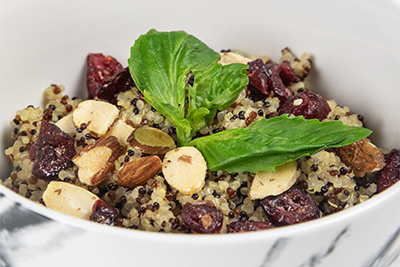Plant-Based Eating’s Growing Popularity
A new survey from the International Food Information Council (IFIC) confirms that interest in plant-based eating is growing: 28% of respondents say they are eating more protein from plant sources, 24% are eating more plant-based dairy and 17% are eating more plant-based meat alternatives compared to 2019. These increases may be tied to a health halo that consumers associate with plant-based eating: more than four in 10 consumers think that a product described as “plant-based” would be healthier than one that is not, even if it had the exact same Nutrition Facts label.
Vegetables, fruits, nuts, seeds, grains, beans and legumes have, of course, long been the basis of healthy eating recommendations in the US Dietary Guidelines and in other dietary recommendations around the world. While the plant-based concept is not new to RDNs, the lingo can be confusing to consumers. Some people mistakenly consider plant-based eating on par with vegetarian or vegan diets, but flexitarian eating or a Mediterranean diet probably come closest to describing a plant-based style. Unlike vegans, for example, who avoid animal foods based on a philosophy of animal rights, people who decide to go plant-based tend to do so for reasons more related to bettering health.
Read on for ways to help your shoppers learn about plant-based eating - from educating them about the difference between eating plant-based versus becoming a vegan or vegetarian to delicious ways to include more plant foods in their diets – our Almond Quinoa Power Bowl recipe is a perfect example. We’ve also included handouts that you’re welcome to use as teaching tools and you’ll also find a research update on a recent study that examined potential healthcare cost savings when almonds are included in the diet.
We just relaunched our website so take a few minutes to check it out. You’ll find lots of great new info there along with our oldies but goodies. Wishing you a happy start to summer!

